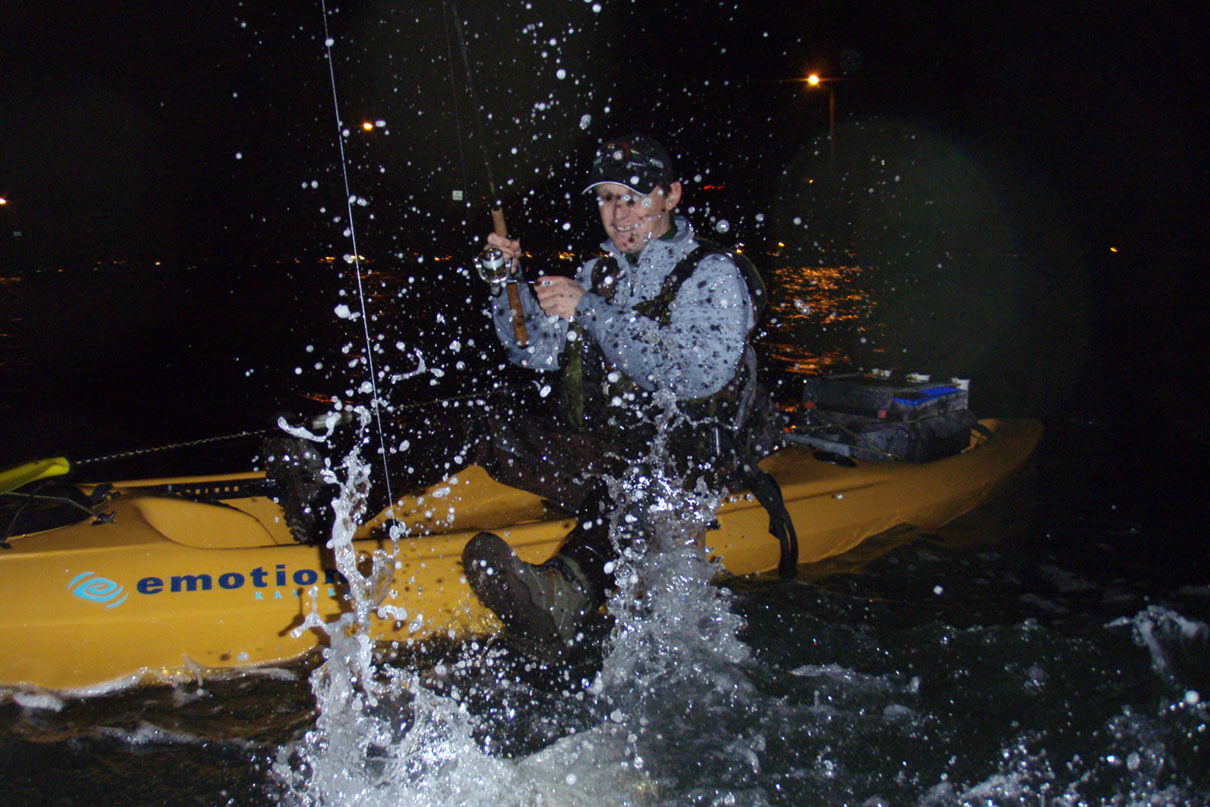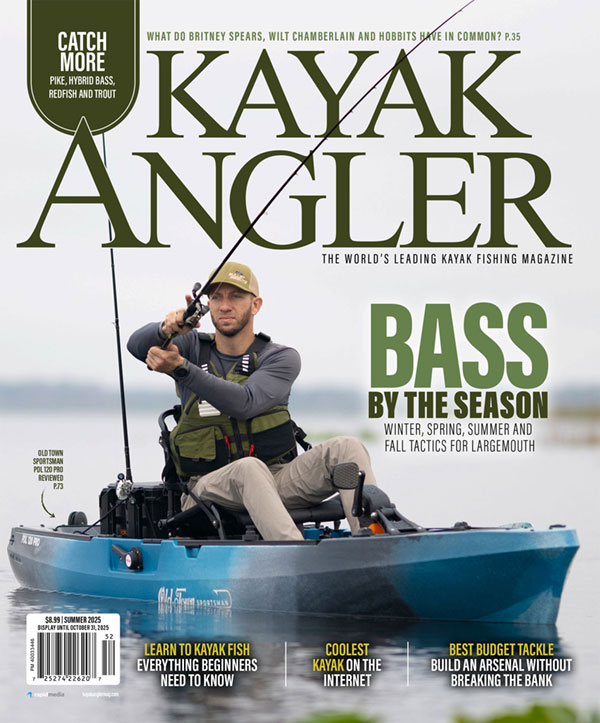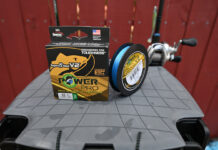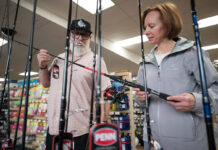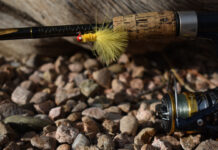“I always start by asking a new angler where he intends to fish,” Mark Lozier says. Lozier is manager at Oceans East Bait and Tackle in Virginia Beach, Virginia, where he helps novice anglers learn the ropes.
According to Lozier, asking where a new angler plans to fish allows him to choose the best tackle and accessories. “It’s best to focus on inshore or offshore, lake or river fishing,” Lozier says. Trying to do everything often results in catching nothing. “Learn one species or location before moving to another species or location.”
Then Lozier asks how the angler expects to fish. “Are they casting lures or soaking bait?” Lozier questions. The tackle depends on the tactic. “I encourage anglers to start with casting lures,” he says. While soaking bait is easier, Lozier says constant activity makes lure fishing more engaging. Lozier explains, “Bait fishing is boring and anglers give up.”
Once Lozier has the basic information, he can build a fishing kit to meet the angler’s needs.
Beginner Bargains: Start Kayak Fishing on a Budget
Rod and Reel
Let’s address the elephant in the room: what’s the budget? Lozier recommends anglers choose their first rod from the middle-of-the-road price point. “There are great options for quality rods and reels at a reasonable price,” he says. Features that used to be reserved for high-dollar tackle are now available on less expensive choices. “Most fishing rods are carbon fiber and reels come with sealed body and durable bearings and gears,” he says.
To ease the learning curve, Lozier recommends an angler start with a 2500 to 3500 spinning reel. The system is easier to cast than a conventional reel so the angler spends more time fishing and less time untangling a backlash.
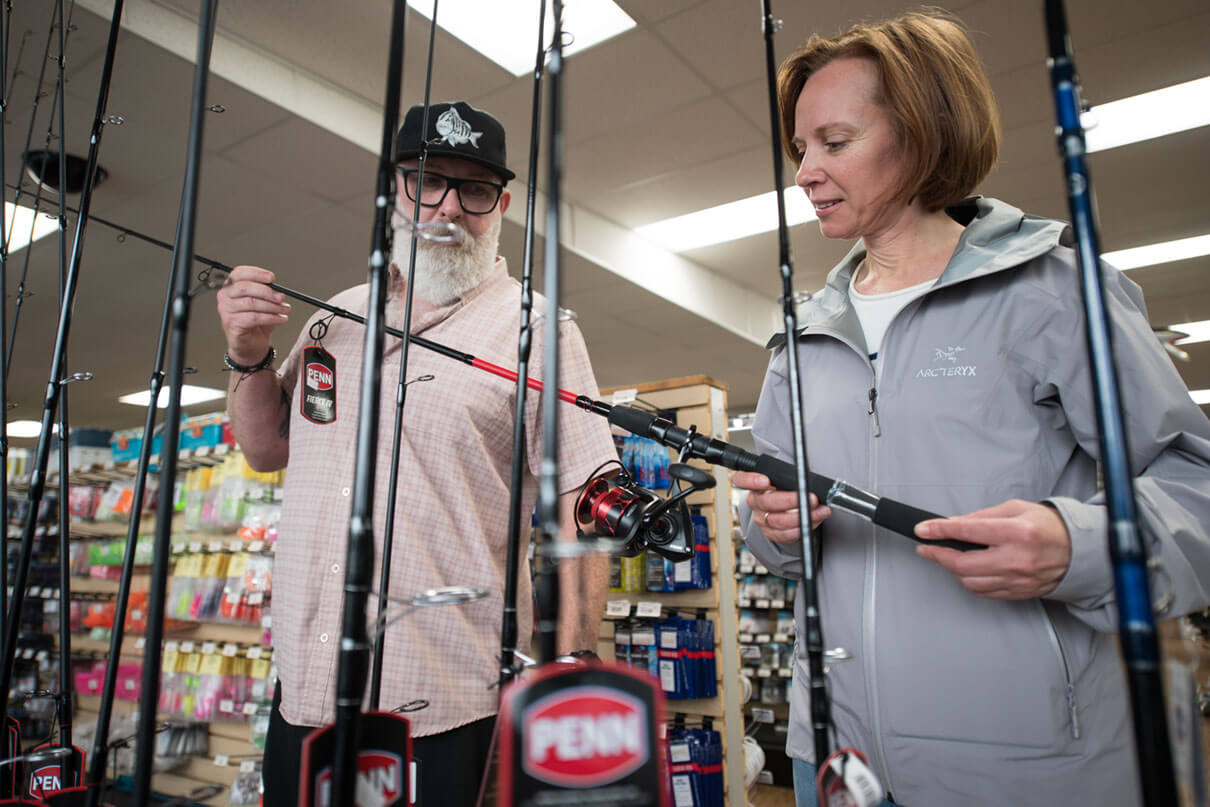
Instead of trying to match a rod to a reel, Lozier suggests choosing a factory rod and reel combo. “A combo saves money without sacrificing performance,” he says. Look for a pair that combines a good reel with a decent rod. “The reel has all the moving parts, so a better reel is more reliable,” he explains.
Line
Fishing line connects the rod and reel to the fish, so it is the most important part of the package. “Don’t be afraid of braid,” Lozier says. Braided line is more expensive than monofilament, but the durability makes it a better choice.
Lozier points out another advantage of braid, “The line is more sensitive so I feel every bump on the lure.” The sensitivity helps anglers avoid snags and produce a hard hookset. The improved performance increases the chances of success, and a new angler needs all the help he can get.
Storage
Get rid of Dad’s old tackle box and carry lures in a customizable tackle tray. Tackle trays are available in various sizes to fit in a kayak storage crate or hatch and encourage the angler to only carry the tackle he needs for the day. Movable dividers allow the tray to securely and safely accommodate a variety of lures. Lozier says a water-resistant tackle tray with a lid gasket and secure latch protects lures from dirt and moisture.
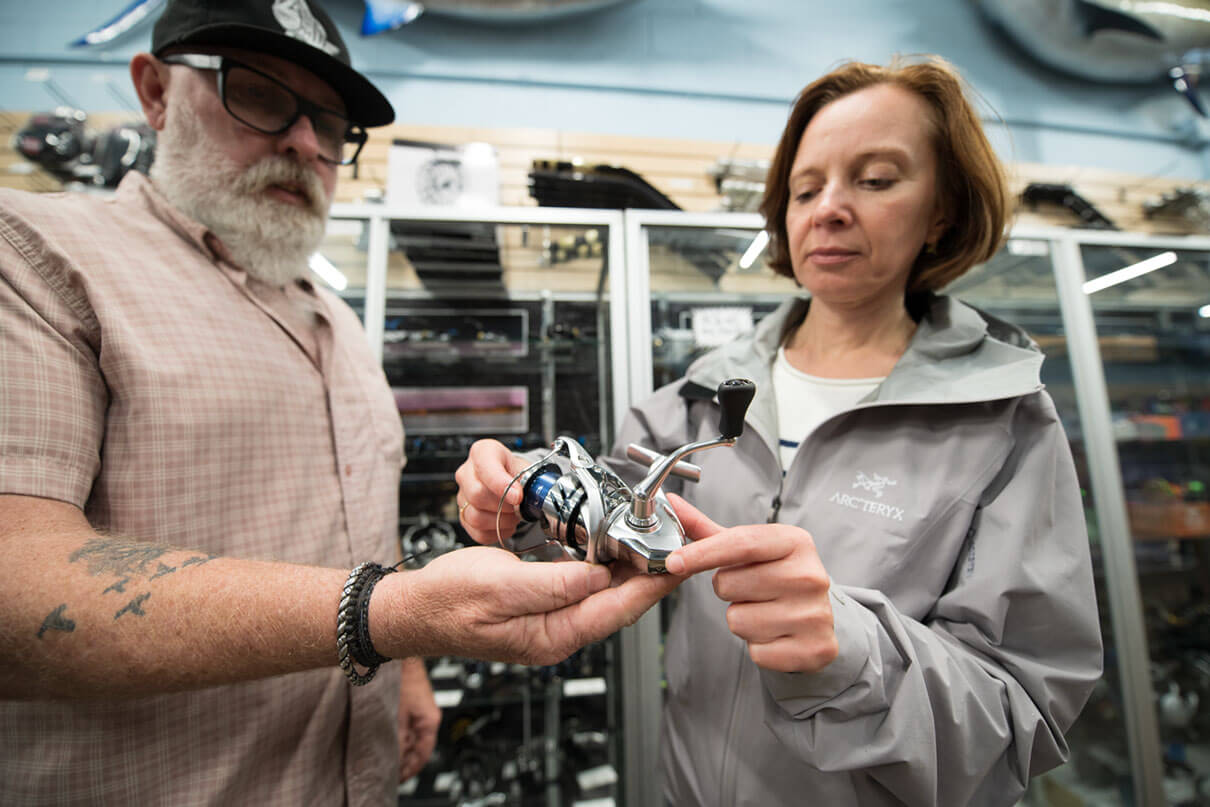
Lures
There are a million ways to fill the tackle tray. Every location, species and season calls for different lures and tackle. Lozier warns new anglers not to get overwhelmed with the choices. “Work the water column,” he says. Lozier encourages anglers to carry surface lures, swimming lures and bottom lures. “Adjust the colors and styles to match the season or water conditions,” he says. He cites the old adage of natural colors on sunny days in clear water and dark colors and more commotion in dirty water under cloudy skies.
Advice
Armed with a little knowledge and the right tackle, a new angler is closer to catching fish and having fun. To narrow the gap even more, Lozier recommends starting at a local tackle shop. “It’s in our best interest to give our customers the tools they need to be successful,” Lozier says. He suggests asking questions and listening to local advice on locations, tackle and tactics. “Don’t ask for honey holes, instead ask about best conditions and the most popular lures.”
On the water, Lozier recommends fishing in popular locations where a new angler can observe other anglers and ask questions. “Be respectful and don’t crowd anyone and most people will be willing to help,” he says.
The biggest challenge is patience to learn the basics and keep trying. “People get frustrated when they aren’t successful,” Lozier admits. To increase the odds, he encourages anglers to focus on a specific location or species. He laughs, “Keep it simple, stupid.” The KISS principle allows a new angler to choose tackle and lures without breaking the bank.
Visit the local tackle shop for the right tackle at the best price. | Feature photo: Ric Burnley

